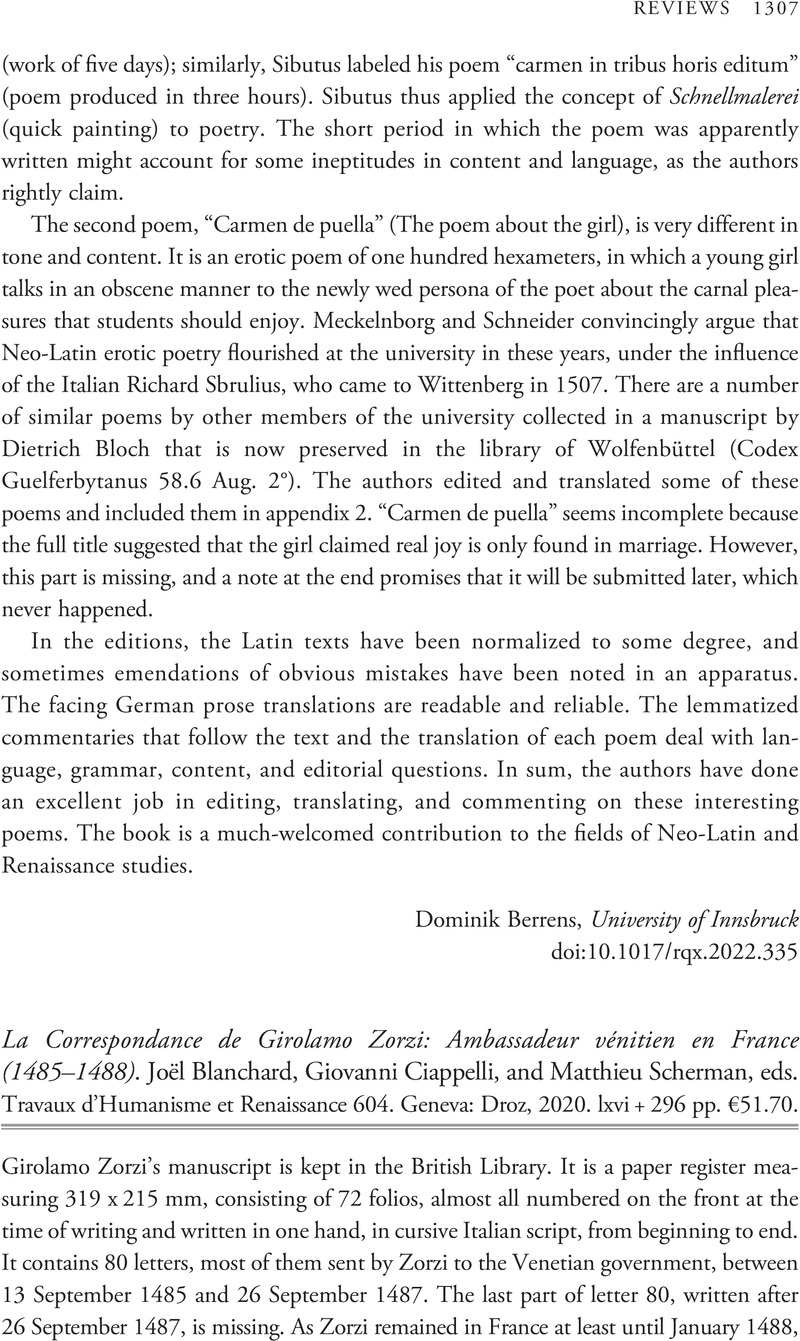No CrossRef data available.
Article contents
La Correspondance de Girolamo Zorzi: Ambassadeur vénitien en France (1485–1488). Joël Blanchard, Giovanni Ciappelli, and Matthieu Scherman, eds. Travaux d'Humanisme et Renaissance 604. Geneva: Droz, 2020. lxvi + 296 pp. €51.70.
Review products
La Correspondance de Girolamo Zorzi: Ambassadeur vénitien en France (1485–1488). Joël Blanchard, Giovanni Ciappelli, and Matthieu Scherman, eds. Travaux d'Humanisme et Renaissance 604. Geneva: Droz, 2020. lxvi + 296 pp. €51.70.
Published online by Cambridge University Press: 09 January 2023
Abstract
An abstract is not available for this content so a preview has been provided. Please use the Get access link above for information on how to access this content.

- Type
- Review
- Information
- Copyright
- Copyright © The Author(s), 2022. Published by the Renaissance Society of America



